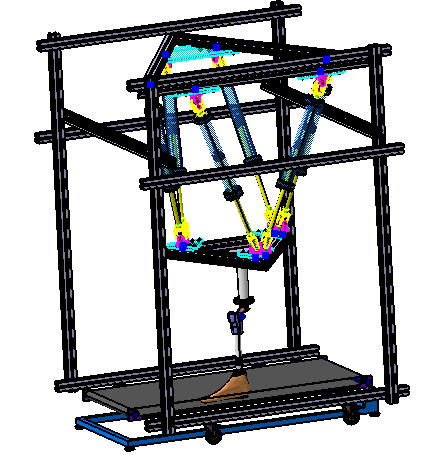- Partager cette page :
- Version PDF
Projet3 - Master2 CSER 2015
Study and design of a Testing Machine Prosthesis for emulation of leg prosthesis
Abstract :
The leg prosthesis compensates the loss of a limb or the failure of a joint by adapting to each situation and each patient but we cannot also ignore some mainly disadvantages caused:
• The irritation of the skin caused by the socket element (upper part of the prostheses) following inappropriate clamping pressure.
• Detachment of the prosthesis.
• Tension force on the end of the residual limb.
That’s why we need to emulate the prosthesis, so we can choose the right parameters to make the patient comfortable. To emulate a prosthetic leg during the human walking cycle, it is difficult to test prosthesis directly on the patient, as a result of a series of simulation tests, he might rapidly be exhausted physically and mentally, so it is better to design a mechanism able to reproduce human walking and return the possible movements to emulate this prosthesis.
Until now humanoid robots are unable to reproduce exactly human walking, hence the use of an alternative proposal is to develop a testing machine based on Stewart platform.
The objective of this project is the study (dimensioning of the cylinders, workspace of platform, and variation movement of joint…) and design of a Testing Machine Prosthesis. As we have already mentioned, the platform will be used to reproduce the human walk by restituting the movements of the human pelvis to emulate a prosthetic leg. In addition, I prepared a technical documentation for the manufacture of this machine (cylinders, joints, platform ...).

Testing Machine Prosthesis







